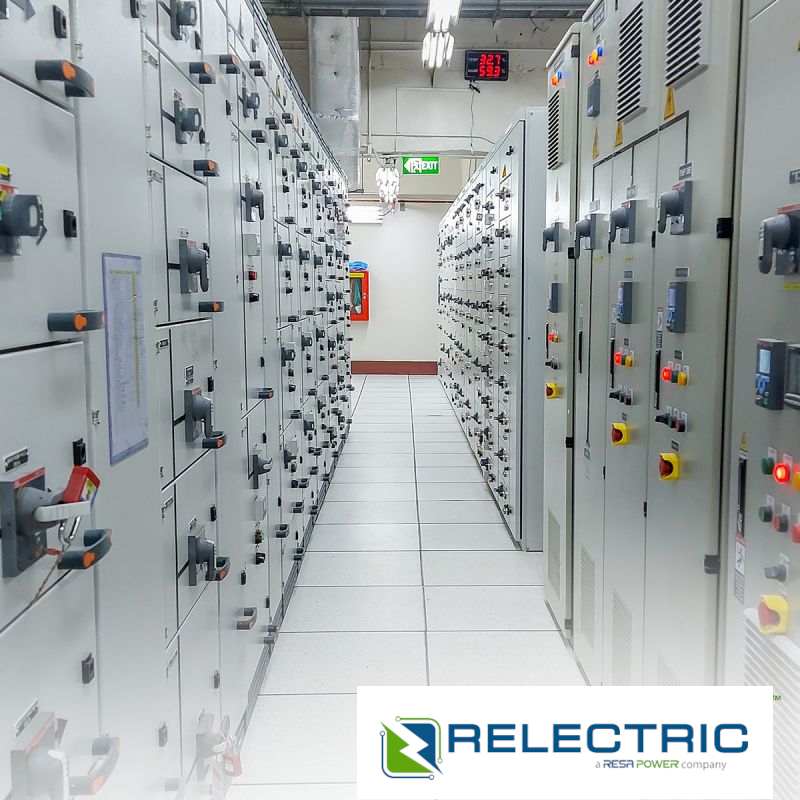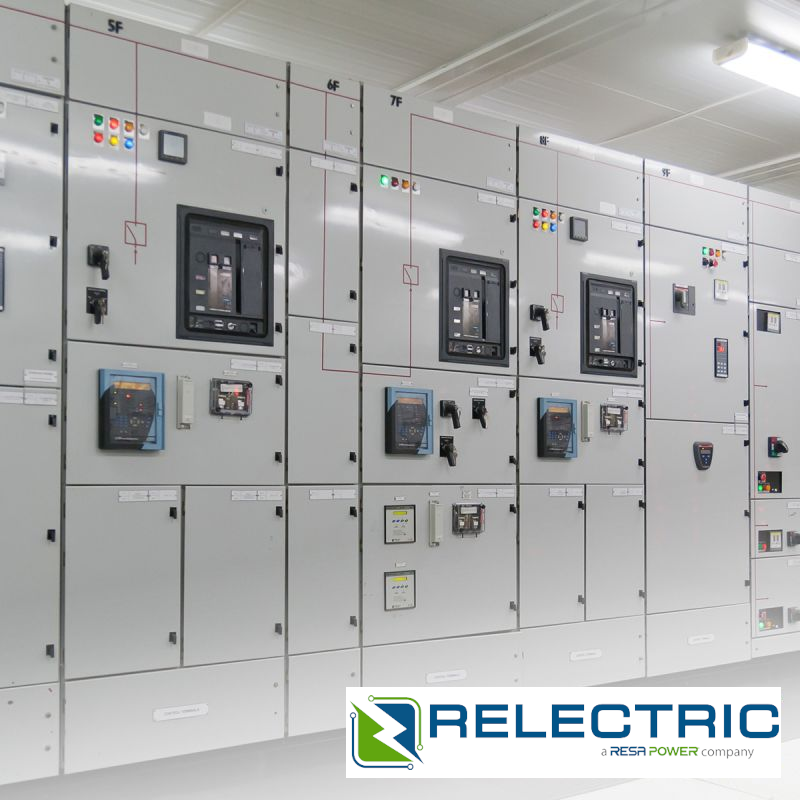With smart electric motor control center panels in your MCC, you can take advantage of features like remote monitoring, predictive maintenance, and real-time analytics to keep downtime to a minimum.
Need MCC Parts in Automation Projects?
Get Quote NowSell To Us
Got Electrical Equipment You Don't Need?

Reduce Your Electrical Inventories & Earn Cash
Sell My EquipmentPanelboard
Need a Panelboard for Your Project/Job?

Our Experienced Sales Engineers Can Help Design the Right Panelboard For You
Learn MoreTransformer Oil Testing
Is Your Transformer Due For Servicing?

Get Your Oil Analysis & Fluid Testing Done By Our NETA-Certified Techs
Learn MoreElectrical Product Resources
Product Training Product Safety Product Guides Product News Featured Products- Keys to Smart Motor Control Center Panel Design
- Applications and Solutions with Electric Motor Technology
- Case Studies with Smart Electric Motor Control Center Panels
- Case Study #1: Remote Monitoring and Control in a Manufacturing Plant MCC
- Case Study #2: IoT for Predictive Maintenance in a Production Facility MCC
- Before Replacing Your Existing Motor Control Panel
- What You Should Know About New Motor Control Panels
Keys to Smart Motor Control Center Panel Design
Remote Monitoring and Control Capabilities: Smart motor control center panels are at the core of smart motor control panel design. They prioritize remote accessibility, allowing you to monitor and manage your equipment from anywhere. Whether through web-based interfaces or mobile applications, you have the power to oversee operations in real-time, making it easier for you to make quick decisions and troubleshoot issues as they arise.
Integration with IoT Platforms: Seamlessly integrate and support connectivity between your motor control center panel and systems. With this integration, your motor control panels can gather and analyze data, providing you with knowledge about your equipment’s performance and energy consumption.
Real-time Data Acquisition and Analysis: Designing industrial smart motor control panels with real-time data acquisition capabilities lets you make informed decisions on the go. By capturing and processing data instantaneously, you can quickly identify potential issues and be proactive in addressing them.
Fault Detection and Diagnostics: These systems use algorithms to detect faults within your equipment. Through predictive analytics and machine learning algorithms, your panels can identify potential failures before they become major issues, minimizing downtime and maintenance costs.
Energy Efficiency Optimization Features: By incorporating energy-saving features like variable frequency drives (VFDs) and power monitoring systems, you reduce electricity consumption and cut down on operating expenses.
Applications and Solutions with Electric Motor Technology
| Type | Description | Example Application and Problem it Solves |
|---|---|---|
| Variable Frequency Drive (VFD) Panels | Incorporate VFDs to regulate motor speed and torque, optimizing energy efficiency and process control. | Controlling the speed of motors in HVAC systems to match varying demand, reducing energy consumption, and extending equipment lifespan. |
| Programmable Logic Controller (PLC) Panels | Feature advanced programming capabilities for flexible automation logic and seamless integration with other systems. | Automating the operation of conveyor belts in a manufacturing plant to optimize production throughput and minimize manual intervention. |
| Human-Machine Interface (HMI) Panels | Provide intuitive interfaces for operators to monitor and control motor functions, often featuring touchscreens and graphical displays. | Allowing operators to adjust settings and troubleshoot motor issues in real-time, enhancing operational efficiency and reducing downtime. |
| Distributed Control System (DCS) Panels | Decentralize control across multiple nodes, enabling coordinated operation and fault tolerance in large-scale industrial processes. | Managing the operation of interconnected pumps and valves in a chemical processing plant, ensuring consistent product quality and safety. |
| IoT-enabled Panels | Leverage IoT technology for remote monitoring, predictive maintenance, and data-driven insights for optimized motor control. | Monitoring motor performance in a fleet of industrial machines remotely, enabling proactive maintenance and minimizing unplanned downtime. |
| SCADA (Supervisory Control and Data Acquisition) Panels | Centralize control and visualization of motor operations, offering real-time monitoring and historical data analysis capabilities. | Monitoring and controlling water distribution pumps in a municipal water treatment plant, ensuring efficient operation and regulatory compliance. |
| Integrated Motor Control Panels | Combine various smart technologies, such as VFDs, PLCs, and HMIs, into a unified system for comprehensive motor control and automation. | Integrating motor control, monitoring, and diagnostics in a manufacturing facility, streamlining operations and enhancing overall efficiency. |
Case Studies with Smart Electric Motor Control Center Panels
Case Study #1: Remote Monitoring and Control in a Manufacturing Plant MCC
PROBLEM:
Manufacturing plant MCC (Motor Control Center) operators faced challenges in monitoring and controlling equipment across areas of the facility. Lack of real-time visibility into machine performance and delays in responding to issues led to inefficiencies and downtime.
SOLUTION:
Remote monitoring and control used IoT technology and smart motor control panels. Sensors were installed on critical machinery to collect real-time data on parameters like temperature, pressure, and motor status. Data was sent wirelessly to a centralized control system, accessible to operators via web-based interfaces. Operators now monitor equipment performance remotely and safely.
Case Study #2: IoT for Predictive Maintenance in a Production Facility MCC
PROBLEM:
A production facility was dealing with unplanned equipment failures and costly reactive maintenance practices. Scheduled maintenance routines were inefficient and often resulted in unnecessary downtime and maintenance expenses.
SOLUTION:
Smart motor control panels equipped with IoT sensors were deployed to continuously monitor equipment health and performance parameters in real-time. By leveraging machine learning and predictive maintenance algorithms, the system could identify patterns indicative of impending equipment failures or performance degradation. Operators received predictive maintenance alerts, notifying them of potential issues well in advance.


Before Replacing Your Existing Motor Control Panel
When considering purchasing a new smart motor control panel for their existing legacy motor control center, customers may encounter compatibility issues due to several reasons. You may want to consider refurbished or surplus MCC parts that match your existing technology.
Communication Protocols: Legacy motor control centers may use proprietary communication protocols not compatible with modern smart motor control panels. Incompatibility in communication protocols can complicate the integration and seamless operation of new panels with existing systems.
Voltage and Current Ratings: Smart motor control panels may have different voltage and current ratings compared to legacy systems. Mismatched ratings can lead to compatibility issues and potentially damage equipment if not addressed properly.
Control Logic and Programming: Legacy motor control centers often have custom control logic and programming tailored to specific applications. Compatibility issues may arise if the programming language or logic used in the new smart panels differs significantly from the existing setup.
Physical Dimensions and Mounting Configurations: Smart motor control panels may have different physical dimensions and mounting configurations compared to legacy systems. Incompatibility in size or mounting options can make it challenging to retrofit new panels into existing enclosures or mounting spaces.
Sensor and Actuator Compatibility: Legacy systems may use older sensors, actuators, or peripheral devices that are not compatible with modern smart motor control panels. Integrating new panels with existing sensors and actuators may require additional retrofitting or upgrades to ensure compatibility.
Wiring and Terminal Connections: Differences in wiring schemes, terminal types, and connection methods between legacy and smart motor control panels can lead to compatibility issues during installation and commissioning. Adapting wiring configurations and terminal connections may be necessary to ensure proper functionality.
Software and Firmware Compatibility: New smart motor control panels often come with updated software and firmware versions, which may not be compatible with older legacy systems. Compatibility issues with software and firmware can affect the seamless integration and interoperability of new panels with existing control systems.
Compatibility with Existing Auxiliary Equipment: Compatibility issues may arise with auxiliary equipment such as starters, relays, contactors, and other control devices connected to the legacy motor control center. Ensuring compatibility with existing auxiliary equipment is essential to avoid operational disruptions and ensure the overall functionality of the system.
